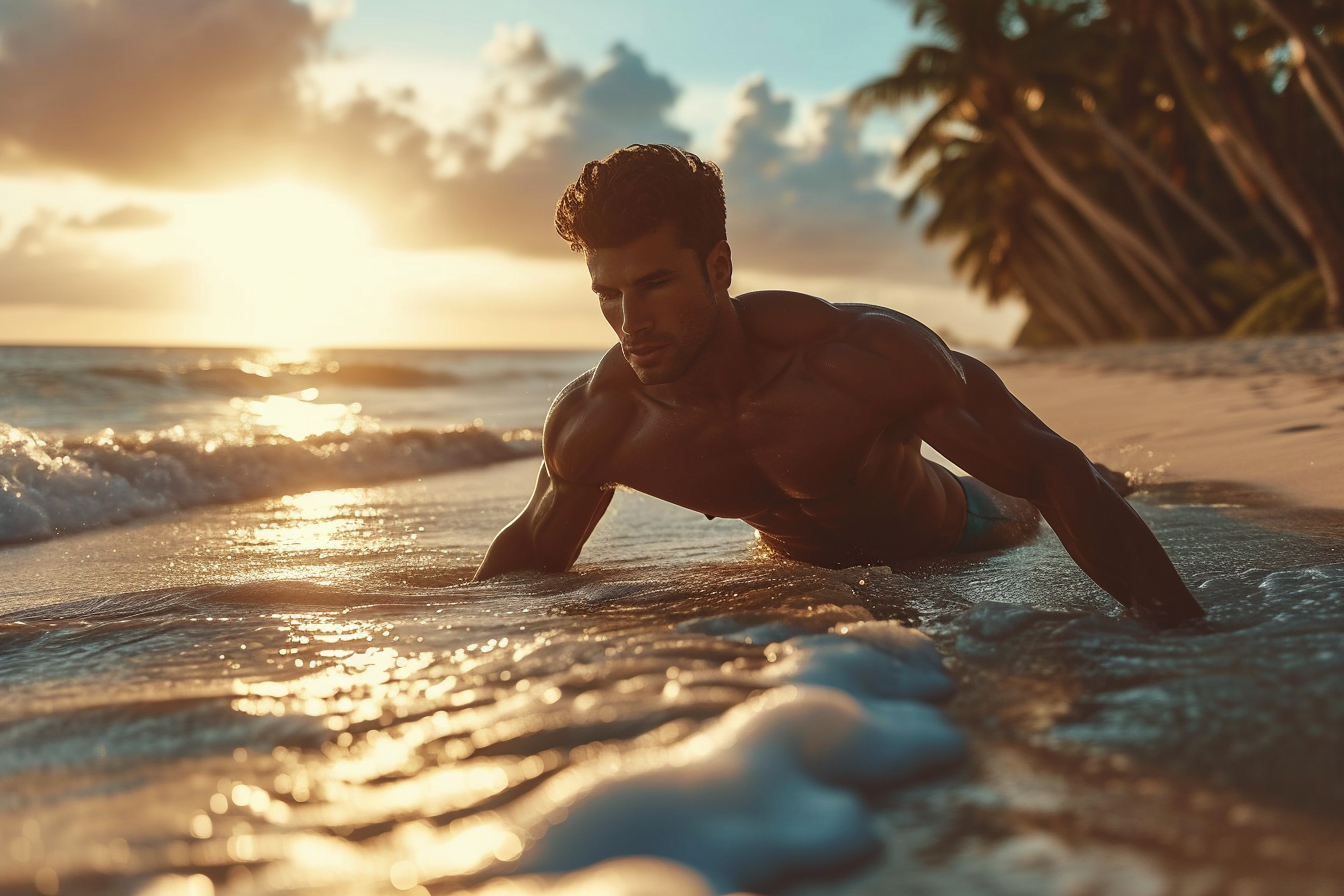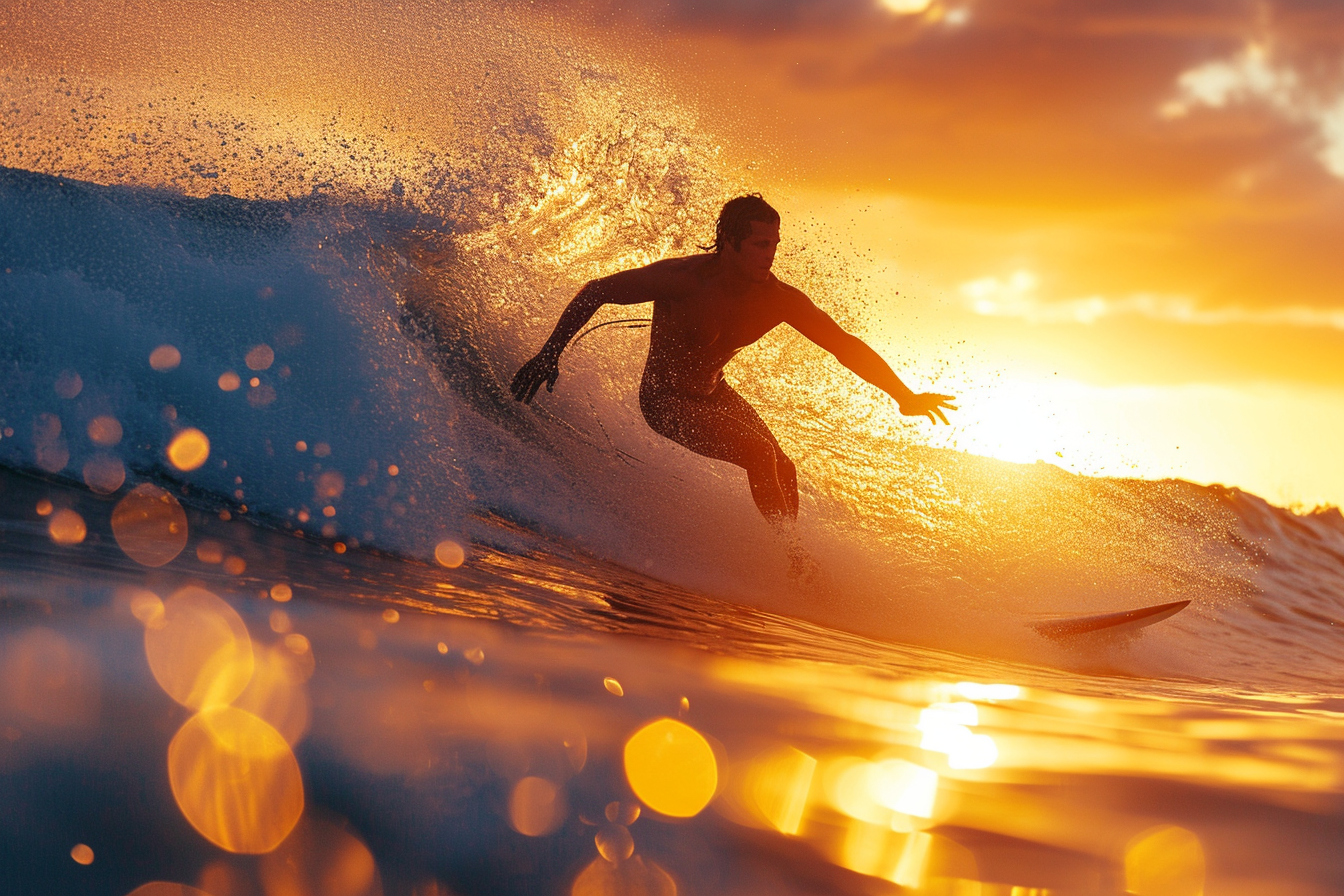Embracing the raw power of the ocean and the thrill of catching a wave unencumbered by any equipment distinguishes body surfing as one of the most pure and exciting forms of wave riding. Body surfing strips down the experience to just the individual and the wave, creating an intimate bond between the surfer and the sea. To navigate this exhilarating sport, one must master the foundational elements and develop a keen understanding of the ocean.
Understanding the ocean

The role of oceanography
Before entering the water, a budding body surfer must comprehend the fundamentals of oceanography. Waves are generated by the wind; their size and power are influenced by factors such as wind speed, duration, and fetch. Also, tides, which are controlled by the gravitational pull of the moon and sun, drastically affect wave conditions. Understanding these dynamics will enable a body surfer to select the optimal time to engage with the waves.
Reading the waves
Discerning the patterns of the waves is another crucial skill. There are different types of waves: spilling, plunging, and surging. Spilling waves break gently over a long distance, making them favorable for beginners. Plunging waves, on the other hand, are more intense and break powerfully in a barrel form, offering a thrilling ride for the experienced surfer. Surging waves break on steep beaches and can be dangerous, often best to avoid for body surfing purposes.
Assessing beach conditions
Evaluating the beach’s physical characteristics, such as the slope of the seabed and the presence of riptides or any other hazards, is indispensable. A gentle slope is more likely to produce spilling waves, while a steep slope often results in plunging waves. Recognizing the signs of riptides, such as water that is darker and has fewer breaking waves, is fundamental for safety.
Physical preparation

Fitness and stamina
Physical fitness embodies a key element in successfully engaging with the demands of body surfing. Core strength, endurance, and the ability to hold one’s breath under water are all vital to optimize performance and safety. Regular cardiovascular exercise and swimming will build the necessary stamina and strength.
Flexibility and balance
Flexibility contributes to a body surfer’s ability to maneuver in the water and to recover from the turbulent conditions after a wave. Practices like yoga or a targeted stretching routine can enhance flexibility. Good balance is also essential for riding waves effectively, and it can be improved through various balance exercises or board sports like skateboarding.
Gear and equipment
Although body surfing is a minimalist activity, a few select pieces of gear can enhance the experience and improve both performance and safety.
Swim fins
Swim fins are the primary piece of equipment for a body surfer. They help to propel the surfer into the wave and provide increased maneuverability. Fins come in different shapes and stiffness levels; selecting a pair depends on personal preference, fitness, and the specific conditions of the waves.
Hand planes
A hand plane is a small hydrodynamic board that can be used to increase lift and speed on a wave. While not essential, many body surfers appreciate how hand planes enhance their control on the water and enable them to ride waves that might otherwise be challenging to catch with the body alone.
Body surfing wetsuit
To ensure comfort and extend sessions in cooler waters, a wetsuit tailored for body surfing is advisable. Wetsuits designed for body surfing offer flexibility and buoyancy without restricting movement.
Technique and skills
Once the body surfer has grasped the fundamentals of the ocean, assessed the conditions, and geared up, it is time to focus on technique.
Positioning and timing
The art of positioning oneself in the right spot in the water to catch a wave requires practice and patience. The key is to remain slightly ahead of the breaking wave. Timing is everything; too early, and the wave will roll beneath the surfer uncaught, too late, and it will break before one can harness its energy.
The takeoff
Perfecting the takeoff is a fundamental aspect of successful body surfing. As the wave approaches, the body surfer must kick powerfully with the fins while simultaneously using a downward arm stroke on the wave’s face to help propel the body forward. The upward arching of the back can also create additional lift.
Riding the wave
Maintaining high speed and control once on the wave is a balancing act. The body surfer aims to stay in the high-energy part of the wave known as the pocket, just ahead of where the wave is breaking. Subtle shifts in body weight and angling of the shoulders and hips help navigate along the wave face. Spread arms can also stabilize and steer, much like wings on an airplane.
Safety and etiquette
Ocean safety
Knowledge of ocean safety is non-negotiable. Always body surf with a buddy, understand how to identify and escape a riptide, and never turn your back on the ocean, as waves can be unpredictable.
Surf etiquette
Respecting the unwritten rules of the surf is critical. Avoid dropping in on someone else’s wave, and maintain awareness to prevent collisions. Sharing the waves and celebrating each other’s rides bolsters the body surfing community’s spirit.
Advanced techniques
Upon mastering the basics, the body surfer can explore advanced techniques to enhance their experience.
Barrel riding
Barrel riding is the pinnacle of body surfing skills. It involves riding inside the hollow curl of a wave. Achieving this requires precise positioning, quick reflexes, and a keen sense for the wave’s movement.
Aerial maneuvers
More experienced body surfers may attempt aerial maneuvers when launching off of a wave’s lip. These tricks require a blend of timing, speed, and a propulsive launch from the wave.
Continuous learning and practice
Analyzing personal performance
Recording sessions via a waterproof camera or having a peer observe can provide valuable insights. Reviewing footage helps identify strengths and areas for improvement.
Learning from others
Observing experienced body surfers, joining a local body surfing club, or even engaging in clinics or workshops can accelerate the learning process and refine technique. Learning from the collective wisdom and experience of others is invaluable.
Patience and perseverance
As with any sport, body surfing demands patience and perseverance. Not every session will be successful, but each wave caught or missed is an opportunity to learn and grow. Developing a deep connection with the ocean over time will enhance the body surfing experience, challenging and rewarding the individual through every ride.
The foundations of body surfing are deeply entrenched in an understanding of and respect for the ocean, honing physical fitness, and refining one’s technique through continuous practice and learning. For those who aspire to engage with waves at their most elemental level, body surfing presents a challenging, invigorating, and ultimately rewarding journey. As each body surfer progresses, the waves continue to offer endless opportunities for mastery and discovery. With the endless horizon stretching before them, body surfers grasp the potential for countless adventures, providing a stirring tableau for exploration and growth in the dynamic dance with the sea.


Leave a Reply